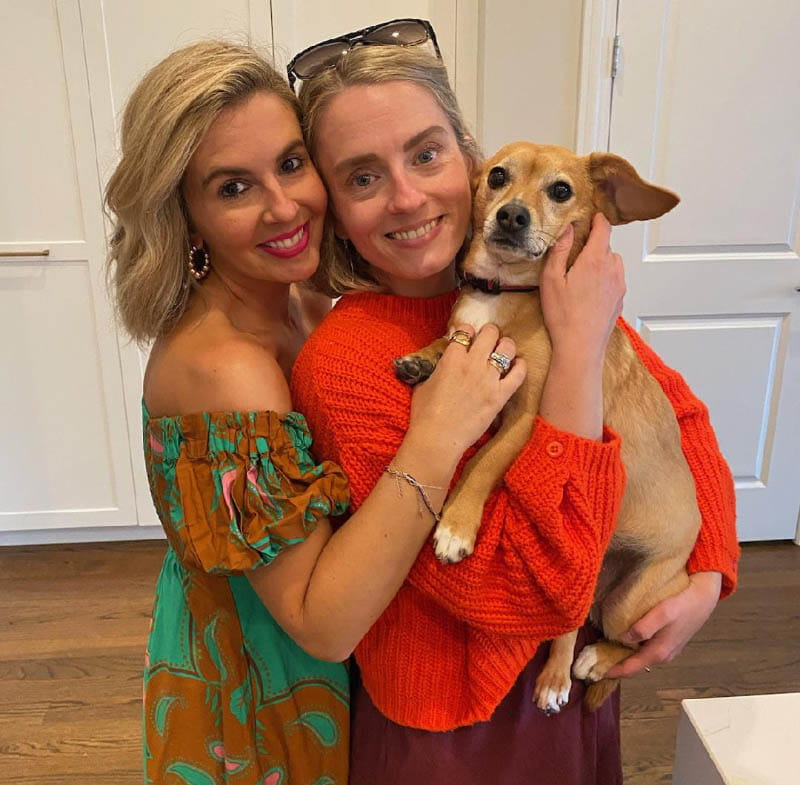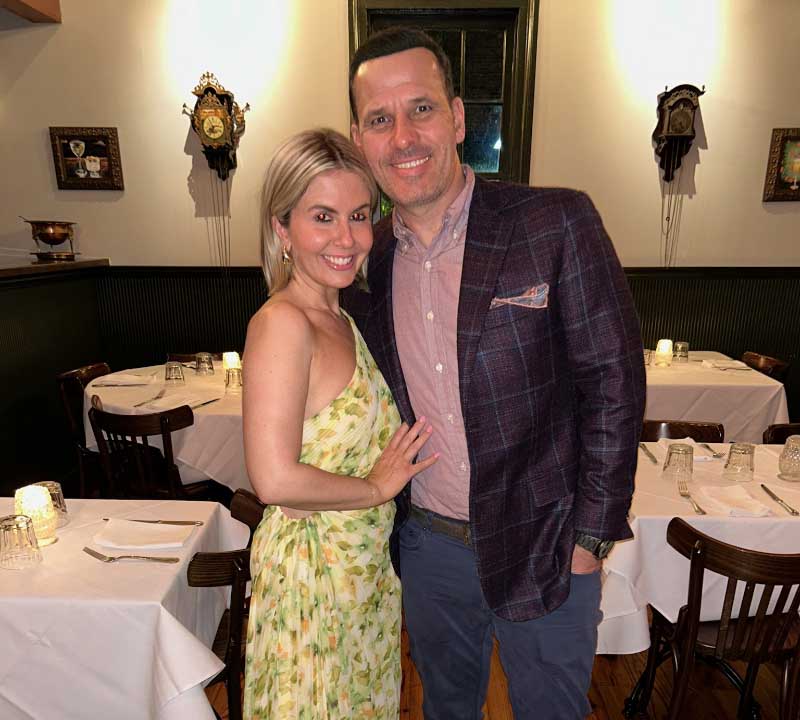Hours after a massive stroke, 39-year-old was talking and moving
By Diane Daniel, American Heart Association News

For a week or so, Ashley Lunardini felt an intermittent pain in her neck. She also had a dull headache that wouldn't go away. She'd had neck pain before, but headaches were rare.
Overall, she was in excellent health. At 39, she went to Pilates class three times a week, walked every day and ate healthy meals.
She went to see her primary care physician. She didn't see anything wrong. Thinking Lunardini's discomfort could be caused by a nerve, the doctor gave her a prescription for pain medicine.
That evening, Lunardini became nauseous and dizzy. She assumed it was a reaction to the medication.
The next morning, a Friday, she felt fine. After a quick trip to the grocery store, she pulled into her driveway. Steering toward the garage, she became so dizzy she had to stop the car. Soon after, she was fine.
A half hour later, the vision in her left eye started to blur. Before long, it cleared up.
"Something is really weird," she told her husband, Tim Barlog.
A pub in their Chicago neighborhood was having a dog-friendly event that evening, and the couple wanted to take Ruby, their dachshund-beagle mix. Lunardini had noted that Ruby had followed her everywhere all week and whined when she was away – things the dog never did. At the pub, she stayed under Lunardini's chair, again out of character.
Back home an hour later, the couple was about to order a pizza when Lunardini suddenly felt a surge of electricity course through her body.
"Something's not right," she told Barlog. "What is wrong with me?"
She started to cry.
"Here, drink some water," he said, handing her a glass.
With a shaking hand, she started to take the glass but didn't know what to do with it. Then she slumped over on the couch.
"Ashley, can you hear me?" Barlog yelled.
She could. But no words came out of her mouth.
Barlog called 911. Paramedics arrived within two minutes.
After being assessed, Lunardini was taken to a Level 1 trauma hospital about 10 minutes away, where she would get the highest level of care.
She could hear the paramedics talk to her in the ambulance, but she couldn't answer. Only later did she learn that the strange snorting sound she'd heard had come from her. She was gasping for air.
Doctors quickly determined that she'd had a massive stroke. It was caused by a clot in her basilar artery. The basilar is the main artery that carries blood to the back portion of the brain.
After they gave her clot-busting medication, Ashley's sister, Kristin Lunardini, joined Barlog in the room with Ashley. By then, she was unresponsive, paralyzed and intubated.
"We won't know what brain damage has occurred until she's out of surgery," the doctor said.
"The stats they gave were not optimistic," Kristin said. "It was terrifying to see her in that state."
She and Barlog sobbed as they sat with Ashley.
A couple of hours later, doctors performed a thrombectomy, a minimally invasive procedure to remove the clot.
A nurse later said to Barlog and Kristin: "You can see her before going home for the night. She's awake and moving."
They were dumbfounded.
"As we got closer to her room, I could hear her voice," Kristin said. "Then I saw her legs move. We were all just sobbing."
Although Ashley had some memory loss and vision issues, her motor skills and speech were intact.
Even doctors were amazed at her recovery. A few physicians who heard about her case stopped by to see for themselves this patient who'd made such a dramatic reversal.
Ashley was in the intensive care unit for eight days while doctors performed diagnostic tests. They also needed to do another procedure.
The clot had developed because she had several dissections, or tears, in the arteries in her neck. Doctors used stents to keep them open and restore blood flow. What caused the dissections? Doctors couldn't find a reason.
Once home, Ashley did a month of physical therapy and five months of occupational therapy. That helped with her memory loss and vision. Ruby stayed by her side, as she had done just before the stroke.
The first three months post-stroke, Ashley felt constant pressure in her brain. She went from taking small steps around the house to going outside to eventually walking around the block. She returned to work part time after six weeks and returned to full time a few months later.
While Ashley's body continued to heal, emotionally she was traumatized.
"The anxiety I felt during recovery, especially the first three months, was paralyzing," she said. "In some ways, I wished I would have blacked out and remembered nothing of my stroke. Maybe that would have been easier."
In May 2023, nine months after her stroke, she was cleared to begin exercising at the gym. She also started driving short distances. However, there were many times when she made plans to get together with family or friends, then backed out.
"I don't always know what triggers her, but I try to stay flexible," said Kristin, who is a social worker and thus brings a deeper understanding of Ashley's challenges. "I think the whole family has more of an awareness that things can change really quickly."

Well over a year after the stroke, Ashley still struggles with leaving her "bubble." One incentive is traveling, something she and Barlog have always enjoyed.
So far, she's only felt comfortable returning to U.S. cities she's visited often. Even then, before each trip, she makes sure the town has a hospital with a Level 1 trauma center. And while Ruby doesn't travel with her, she brings the next best thing: a toy dachshund named Fuby.
For the two-year anniversary of her stroke survival, the couple celebrated with a trip to Scottsdale, Arizona.
By the three-year anniversary, she hopes to have returned to traveling internationally.
"It's still hard to step outside my bubble," she said, "but I also don't want to live in constant fear."

Stories From the Heart chronicles the inspiring journeys of heart disease and stroke survivors, caregivers and advocates.





